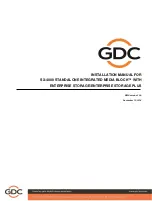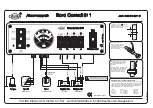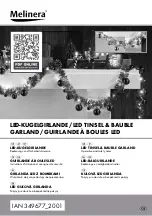
Memory. The selection which buffer has to used by serialization routine is available in dialog
Serialization. The extended buffer selection is ignored for From-file serialization in playlist file
mode. For more details about this limitation, see the
From file mode
serialization mode
description please.
Device / Device options / Serialization / Incremental mode
The Incremental mode enables to assign individual serial numbers to each programmed
device. A starting number entered by user will be incremented by specified step for each
device program operation and loaded in selected format to specified buffer address prior to
programming of each device.
There are following options, that user can modify for incremental mode:
S / N size
S / N size option defines the number of bytes of serial value which will be written to buffer.
For Bin (binary) serialization modes values 1-4 are valid for S / N size and for ASCII
serialization modes values 1-8 are valid for S / N size.
Address
Address option specifies the buffer address, where serial value has to be written. Note that
address range must be inside the device start and device end addresses. Address must be
correctly specified so the last (highest or lowest) byte of serial value must be inside device
start and device end address range.
Start value
Start value option specifies the initial value, from which serialization will start. Generally, the
max. value for serialization is $1FFFFFFF in 32 bit long word.
When the actual serial value exceeds maximum value, three most significant bits of serial
number are set to zero. After this action the number is always inside 0..$1FFFFFFF interval
(this is basic style of overflow handling).
Step
Step options specify the increment step of serial value incrementation.
S / N mode
S / N mode option defines the form in which serial value has to be written to buffer. Two
options are available:
ASCII
- means the serial number is written to buffer as ASCII string. For example number
$0528CD is in ASCII mode written to buffer as 30h 35h 32h 38h 43h 44h (‘0’ ‘5’ ‘2’ ‘8’ ‘C’ ‘D’),
i.e. six bytes.
Bin
- means the serial number is written directly to buffer. If the serial number has more than
one byte length, it can be written in one of two possible byte orders. The byte order can be
changed in „Save to buffer“ item.
Style
Style option defines serial number base. There are two options:
Decimal
numbers are entered and displayed using the characters '0' through '9'.
Hexadecimal
numbers also use characters 'A' through 'F'.
The special case is Binary Dec, which means BCD number style. BCD means the decimal
number is stored in hexadecimal number, i.e. each nibble must have value from 0 to 9.
Values A to F are not allowed as nibbles of BCD numbers.
87
Summary of Contents for 844USB
Page 7: ...Introduction 7 ...
Page 12: ...Quick Start 12 ...
Page 15: ...Detailed description 15 ...
Page 16: ...859 16 ...
Page 28: ...866B 28 ...
Page 41: ...844USB 41 ...
Page 50: ...848A 50 ...
Page 56: ...Setup 56 ...
Page 67: ...Pg4uw 67 ...
Page 117: ...Pg4uwMC 117 ...
Page 127: ...Common notes 127 ...
Page 134: ...Troubleshooting and warranty 134 ...
















































